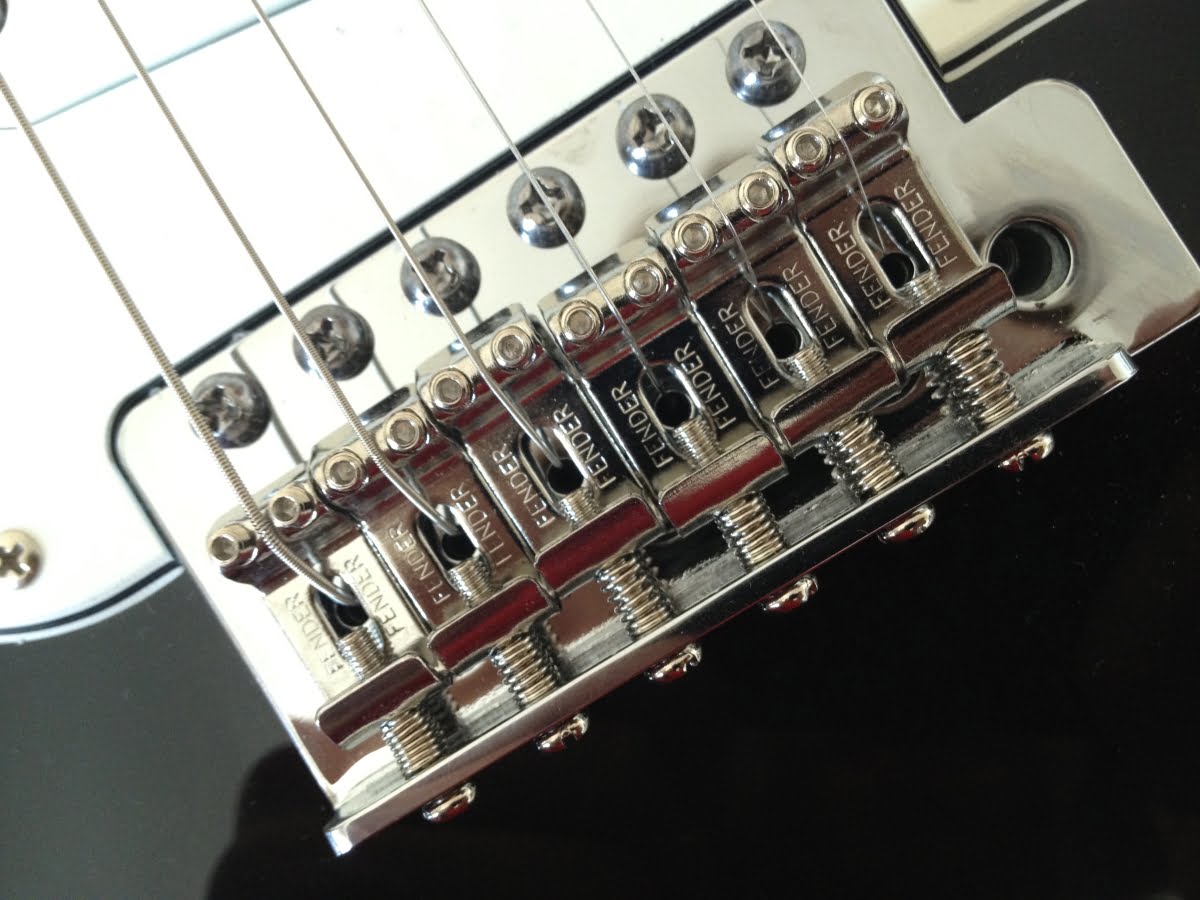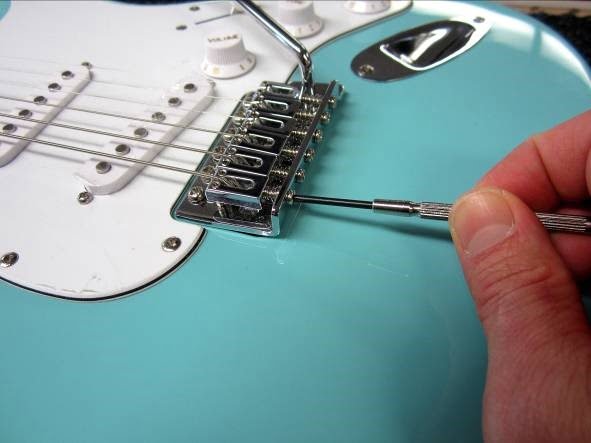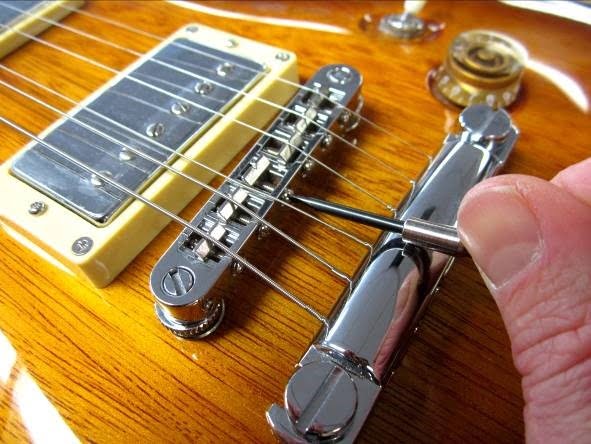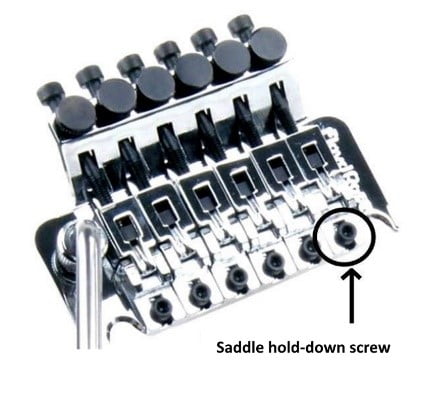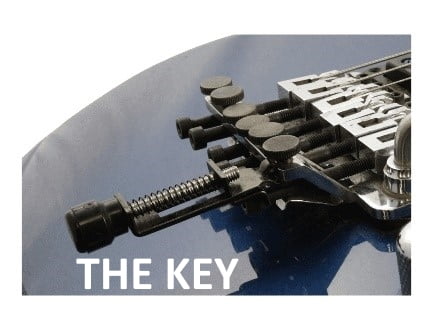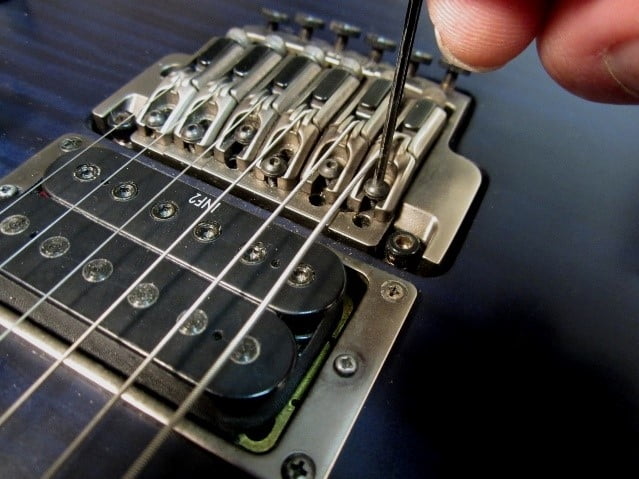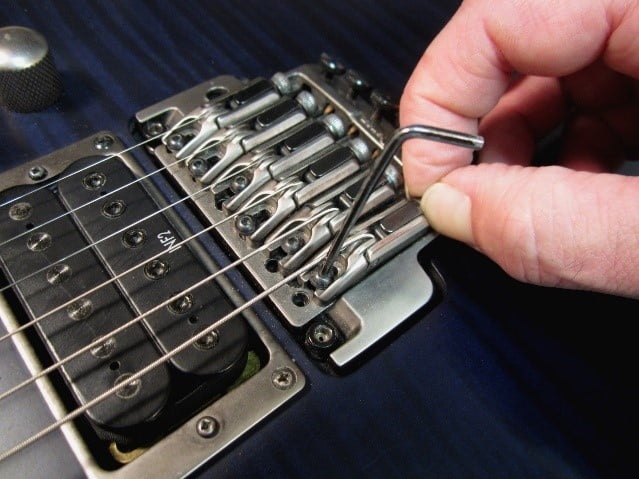Intonation
Intonation is the degree to which notes sound in tune. Since each string on the guitar is a different diameter and pitch, as well as a different tension, they require scaling. If you’ve ever tuned the guitar with an electronic tuner, and then played some notes or chords only to find they were slightly out of tune, you may need to adjust the intonation.
What You Will Need
- A screwdriver or saddle adjustment wrench
- An accurate tuner
How to Check Intonation?
With the guitar tuned to pitch (and in playing position) play a harmonic note at the 12th fret on the #1 string. Check that the note is perfectly in tune and retune if needed. Now press down and play the same note naturally at the 12th fret. Keep in mind that excessive finger pressure will cause the note to sound sharp. Compare the harmonic note to the natural fretted note on the tuner. Listen to them both- they should sound the same. If they are not, the intonation requires adjustment.
How to Adjust Intonation?
The goal is to make the harmonic note at the 12th fret the same pitch as the fretted note. If the harmonic note is in tune, yet the fretted note is sharp, “lengthen” the string by adjusting the saddle further away from the neck. If the fretted note is flat, “shorten” the string by adjusting the saddle closer towards the neck. Make the adjustments in small increments while checking your progress with a tuner. Repeat the procedure until the harmonic and natural fretted notes are identical, as verified by the tuner and your ear.
Adjusting Intonation on Floyd Rose
To adjust the intonation on a Floyd Rose-style double-locking bridge, you must first detune the string and unlock the saddle.
Alternatively, there is a handy tool called The Key. It will enable you to adjust the saddle without detuning the string– making it a big time saver but it only works on Original Floyd Rose design bridges. Slip The Key into place over the string lock screw, loosen the saddle mounting screw, and enjoy fingertip control of the saddle position for accurate intonation.
Starting with the #1 string, determine if it is sharp or flat, as explained previously. On the saddle, there is a small hold-down screw (see the next image) which secures the saddle to the bridge plate. Detune the string then loosen the screw while holding the saddle in place.
Once loosened, the saddle should move freely. To start, try adjusting the saddle in the correct direction by 2/64”, then tighten the attachment screw back down. Retune and test the intonation. Repeat this step until the pitch is correct and then move on to the next string. If the saddle cannot move anymore in the direction needed, check to see if you can relocate the hold-down screw to another position on the bridge plate. This will give you a broader adjustment range.

